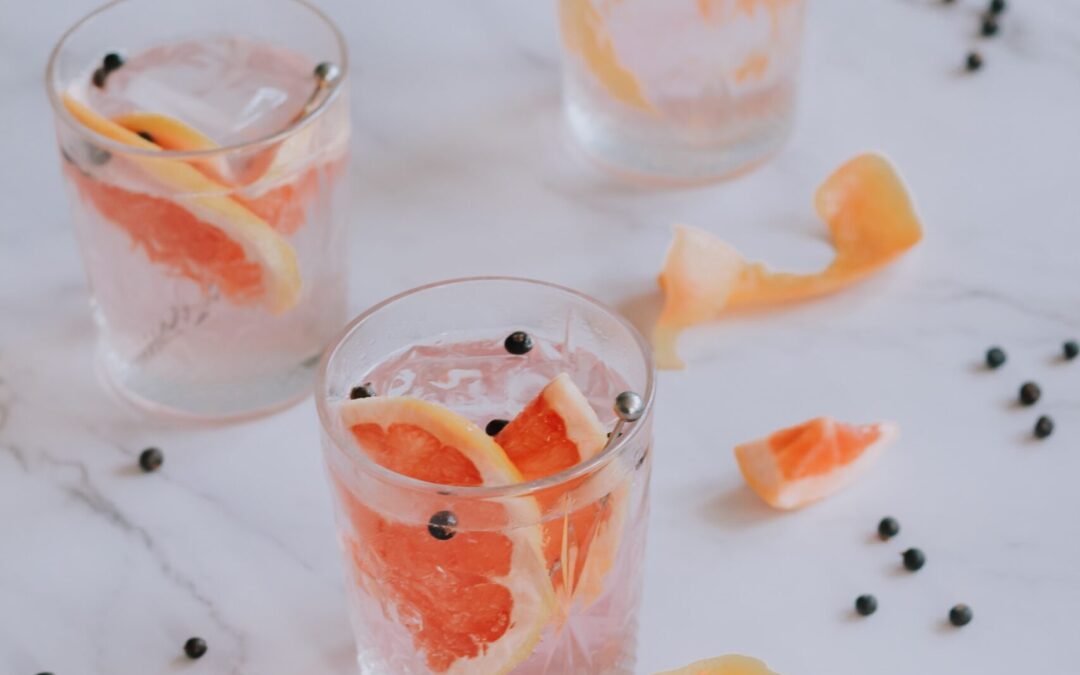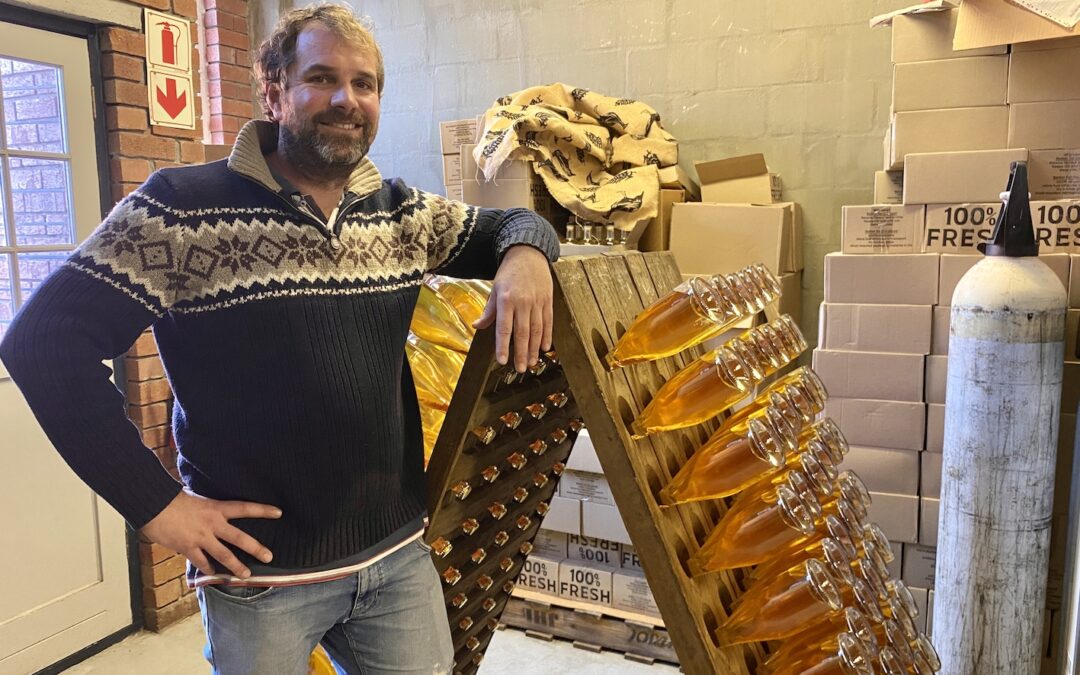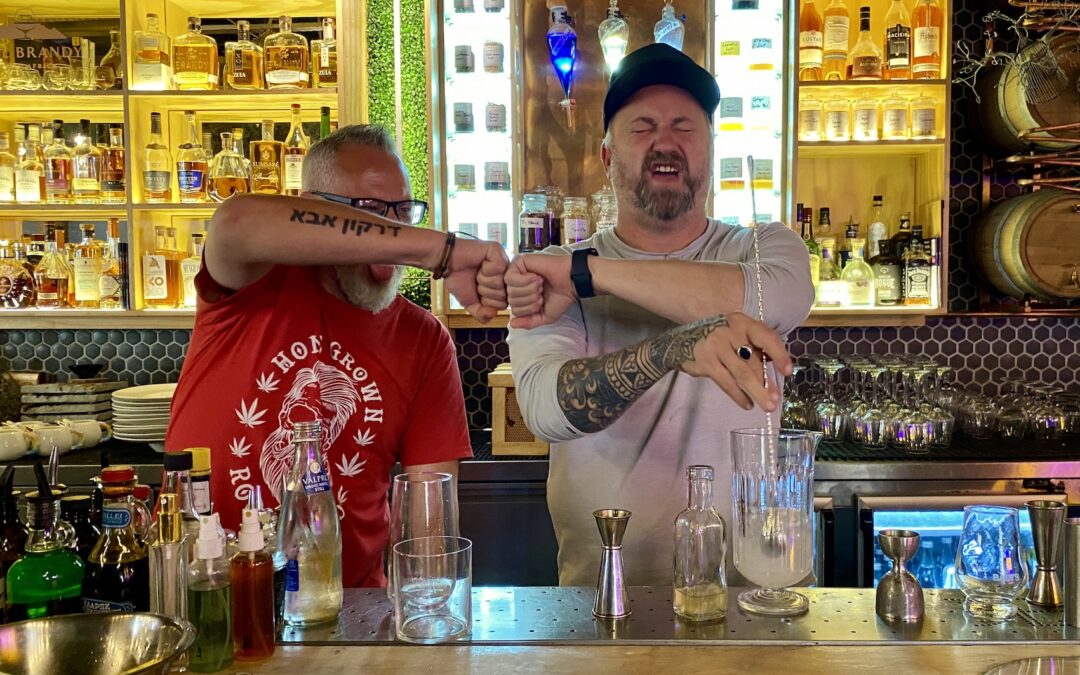You’ve seen those tiny bottles around with their weird smells, but what are they for? Find out in this bitters 101.
What exactly are bitters?
Bitters is an alcohol base that’s been intensely infused with plant extracts – typically orange peel, cassia, gentian, cascarilla and cinchona bark, but potentially various other seeds, herbs, bark, roots, flowers, leaves and fruits. Depending on the recipe, they have a bitter or bittersweet flavour.
What do you use bitters for?
Although originally used medicinally, these days the highly concentrated bitters are predominantly used – in small dashes – to add complexity and taste to cocktails, soft drinks or food.
Won’t bitters make my food and drinks bitter?
No, bitters actually enrich existing flavour profiles, adding nuance and depth and creating balance. They also temper the acidity of citrus and decrease the harshness of raw alcohol.
When were bitters first produced?
The medicinal use of herbs and spices goes back a long way, first being documented in mystical 3000 BC China. The first mention we have of infusing drinks with bitter botanicals goes back to 25 BC Egypt, where, in a practice worthy of the pyramids, bitter botanicals were put in wine to stimulate the appetite.
Now, you can always rely on monks to deliver when it comes to, ahem, spirits. One clever Benedictine friar, in 1500 AD France, put his alchemy training to good use and starting tinkering with medicinal distillations. One of his resulting elixirs formed the recipe for Bénédictine, a Cognac based liqueur with twenty-seven plants and spices.
Around 100 years later, also in France, an old manuscript detailing the ‘Elixir of Long Life’ was sent to a Chartreuse monastery. It wasn’t until 1737 that the befuddled monks were able to decipher it, but various Chartreuse infusions exist to this day.
On the other side of the pond, in the newly formed US of the 1800s, it was de rigueur to spike fortified wine with herbal bitters as a prophylactic cure-all. As any cocktail enthusiast worth their simple syrup knows, this era was also when cocktails came about; indeed, the first cocktail recipe was published in 1830, calling for, wouldn’t you know, bitters.
Demand for high quality, commercially available bitters was on the upswing, and bitter brands were born.
The most famous, of course, is Angostura – the very same brand that sat tucked away in your parents’ verboten liquor cabinet and that you see in any good bar today. The brainchild of Dr Johann Siegert, Surgeon General of the Venezuelan army, Angostura had come to life in 1824, and henceforth it had been enthusiastically dispensed to suffering soldiers to cure seasickness and stomach ailments.
But with the cocktail boom, bitters were no longer seen as simply medicinal. By 1850, Angostura was being exported to England, the Caribbean and the States to satisfy the thirst for balanced, flavourful and, yes, fun drinks.
That was more history than I bargained for. What bitter brands are available in South Africa, and what can I do with them?
Well, Angostura Aromatic Bitters – now produced in Trinidad – remain the hot favourite here (hey, if it’s good enough for Queen Elizabeth II, it’s good enough for us). As the brand was so closely tied with the golden era of cocktails, you’ll find certain classic cocktail recipes call specifically for it, including Pink Gin cocktails and Manhattans. Angostura Orange Bitters is available here now too, and your Old Fashioneds will never be the same.
Underberg Standard Bitters, which include aromatic herbs from 43 countries, has been produced in Germany since 1846. This cultish bitters has an unmistakeable star anise flavour, which works surprisingly well in fruity tiki cocktails, and adds an interesting note to Bloody Marys.
And what about local brands?
Ginifer Bitters, dreamt up by Jacqueline Grobler in Joburg, comes in chocolate, cinnamon, strawberry black pepper, orange vanilla, grapefruit, star anise and chilli flavours. With an exciting range like that, your cocktail choices are limitless – but don’t stop there. For example, the Ginifer Cinnamon Bitters can be used in an apple and cinnamon G&T, in coffee or hot chocolate, or in your pancake batter to give it an amazing kick – yum!
Afrodite Bitters – part of Roger Jorgensen’s Wellington-made portfolio – has Old Time Orange, Hop Grapefruit Artichoke, Buchu and African Aromatic bitters, so again, use your imagination and go wild.
Finally, Santy’s Aromatic Bitters is a standalone Edward Snell product. It’s made from red sandalwood, galangal root, mace, cloves, orange peel, cinnamon, cardamom seed, liquorice root and ginger. And, interestingly, it contains angostura bark, which Angostura actually doesn’t, the brand being named for the old town of Angostura in Venezuela, not the medicinal plant, as you’d expect.
What about cocktail bars – don’t some have their own house bitters?
Ding! Ding! Ding! Indeed, you can judge how good a cocktail bar is based on whether they do or not.
Among others, Kurt Schlechter and his team at Cause | Effect make hibiscus and artemisia, fynbos, mountain, chocolate and cardamom bitters. Don’t miss the Cape Negroni on tap, made with spicy naartjie bitters.
Pete Lebese of The Botanical Bar makes nine bitters: four for the regional menu and five for classics and other drinks. For example, he specifically created grapefruit and spekboom bitters for The Great Karoo regional cocktail.
Up north, the Mootee boys (Denzel Heath, Dom Walsh, Devin Cross and Peter Good) have an ‘if it ain’t broke, don’t fix it’ attitude to bitters. Instead of making their own from scratch, they enhance the likes of Angostura, adding local botanicals for their medicinal properties in line with the bar’s healing ethos. Case in point: the Umfazi cocktail, with hopped grapefruit bitters, is designed specifically for female imbibers, as the oestrogen-rich hops help with menstrual cramps, menopause and even breast development. Mootee also has moer koffie bitters in their Dip ‘n Ouma cocktail and Cape Malay bitters in Iputha – The Mistake.
This post first appeared on Food24 on 28 March 2018.











